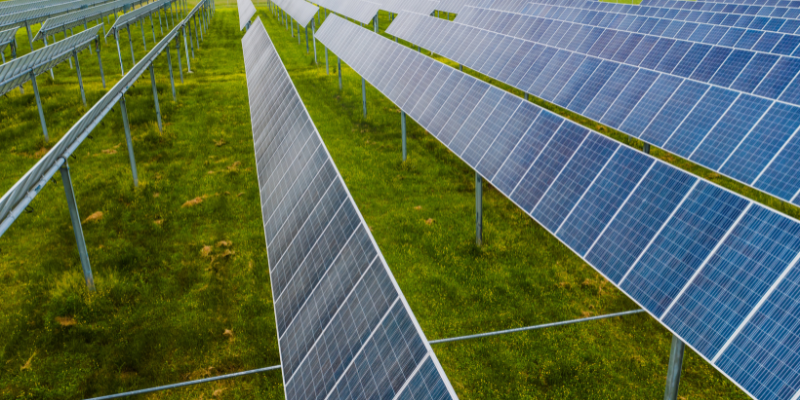Green Technology: Innovations For A Sustainable Future
Can green technological innovations save the Earth? The answer is yes. Green technology is shaping a sustainable future by reducing ecological footprints through renewable energy sources like wind and solar, advanced waste management, and energy-efficient solutions.
It is revolutionizing various industries and addressing global environmental challenges. Key advancements, such as energy-efficient buildings and carbon capture, can transform our world. In this blog, we will explore everything about green technology.

What Is Green Technology
Green technology has a multifaceted nature. Green technology is also called environmental technology; it creates eco-friendly products and conserves natural resources. It ranges from sustainable construction processes to renewable energies. About 40 per cent of the world's energy requirements are fulfilled through renewable energy practices. It tells the pivotal role of green technology in reducing ecological footprint. Key areas of Green technology include
1. Energy efficient construction processes.
2. Waste management
3. Sustainable agriculture
4. Water purification
5. Renewable energy
6. Green computing
7. Organic farming
8. Waste to the energy system
9. Energy efficient devices
10. Reduce, reuse, and recycle
Four Pillars Of Green Technology
Four key principles of sustainable technology guide the implementation of sustainable practices and help address environmental challenges.
Energy Efficiency
Green technology emphasizes reducing energy consumption and enhancing energy efficiency through innovative technology. Energy-efficient devices include LED lights and inverter options, which consume less energy than traditional devices.
Renewable Energy
Renewable energy consists of all renewable energy sources that can be made repeatedly and cannot be depleted. Renewable energy can be generated from natural resources. These energy sources include solar, hydroelectric, wind, geothermal, and biomass. Renewable energy can meet the demands of global energy without harming the environment.

Waste Reduction And Management
Recycling and reusing are two ways to reduce waste through green technology. Technologies that reduce waste and generate energy from it lessen the burden on waste sites and landfills.
Sustainable Designs And Innovation
Green technology designs infrastructure and products that cause no or minimal environmental harm. Eco-friendly materials are used in sustainable energy devices. Eco-friendly designs focus on reducing ecological footprints and resource optimization.
Future Outlook On Green Technology
The future of green technology looks promising, with considerable potential in different sectors. Green technology solutions will only be available for global environmental challenges. Here are some key features that will shape the future of this technology.
Progress In Renewable Energy
According to the International Energy Agency, in 2025, renewable energy will account for 95 per cent of the global energy supply. In the future, high-capacity solar panels will drive the growth of renewable energy.

Energy Storage Solutions
With the advancements in renewable energy sources, energy-efficient storage systems will be crucial for storing more energy. In 2025, the battery storage capacity in the USA will increase from 1.2 gigawatts to 7 gigawatts.
Smart Grids
Innovative grid systems will improve the reliability and efficiency of power systems. They can monitor the electricity supply in real time and optimize energy distribution.
Electric Vehicles
Electric vehicles are a significant advancement in battery technology. By 2040, sixty per cent of vehicles will be electric, reducing the emission of greenhouse gases from transport.
Green Hydrogen
Green hydrogen is made by splitting water into oxygen and hydrogen. It plays an essential role in decarbonizing the transport and industry sectors. An estimate states that hydrogen energy will meet 24 per cent of the world's energy demand by 2050.
Carbon Capture, Utilization, And Storage
Technologies for carbon capture, utilization, and storage, or CCUS, are crucial in reducing the effects of climate change. According to the Global CCS Institute, CCUS has the potential to capture and store more than seven gigatonnes of CO2 per year by 2050, which would drastically lower atmospheric CO2 levels.
Models Of The Circular Economy
Circular economy models prioritize waste reduction and resource efficiency and are becoming more popular. This strategy encourages the recycling, remanufacturing, repairing, and reusing goods and materials. According to a Foundation, a circular economy will cut greenhouse gas emissions by 45% by 2050.
Policy Regulation And Support
Encouraging green technologies will require robust international agreements and political policies. Significant legislative commitments that will influence the direction of green technology in the future include the United States' re-entry into the Paris Agreement and the European Union's Green Deal.
The shift to a low-carbon, sustainable economy will require constant innovation, investment, and cooperation amongst many sectors and stakeholders as these trends develop. Green technologies are at the vanguard of this revolutionary adventure, and the path to a greener future is obvious.
Green Technology Innovations For A Sustainable Future
Green technology is the key to a resilient and sustainable future. Innovations in green technology reduce ecological footprints and ensure eco-friendly growth. The integration of smart grids and renewable technologies promotes energy-efficient systems. The revolution of green technology will meet the growing energy demands. However, the success of green technology depends upon the collective effort of policymakers and governments.





